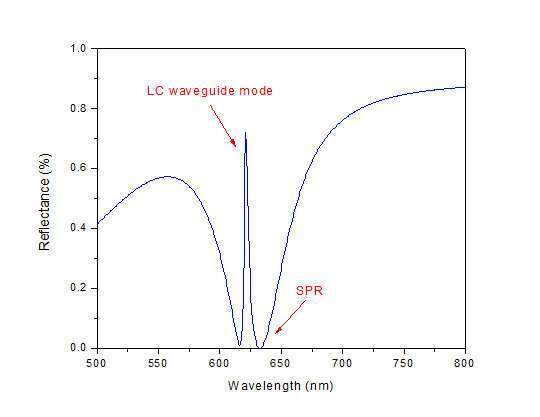
Chiral Liquid Crystal Assisted SPR Sensor of Physical Fields
Surface plasmon resonance (SPR) – based sensors are one of the most advanced real time detection technologies. Usually Kretschmann configuration is used for effective plasmon excitation. In this paper we consider the influence of chiral liquid crystal layer, adjacent to the metal, on SPR. Bearing in mind that the alignment of liquid crystal is easily controlled by different physical fields, such as electric field or temperature, we have studied how helical pitch, tilt angle and number of periods influence SPR. The pitch length considerably changes resonance position with more than 30 nm, shifting the resonance towards red wavelengths. So, factors causing self-assembling helical structures can be sharply detected. Moreover, we have found that waveguide modes strongly depend on the parameters of chiral liquid crystal layer. At optimal conditions for pitch length/ liquid crystal thickness/ tilt angle the waveguide mode appears exactly at the plasmon resonance, causing its splitting as shown in the figure. This effect, together with SPR shift, increases considerably the accuracy of measurement. The influence of large birefringence of liquid crystal on the sensitivity has been studied as well. Our theoretical study is performed by Maxwell equations solver based on 4x4 method.

katiajeliazkova@abv.bg
Powered by Eventact EMS